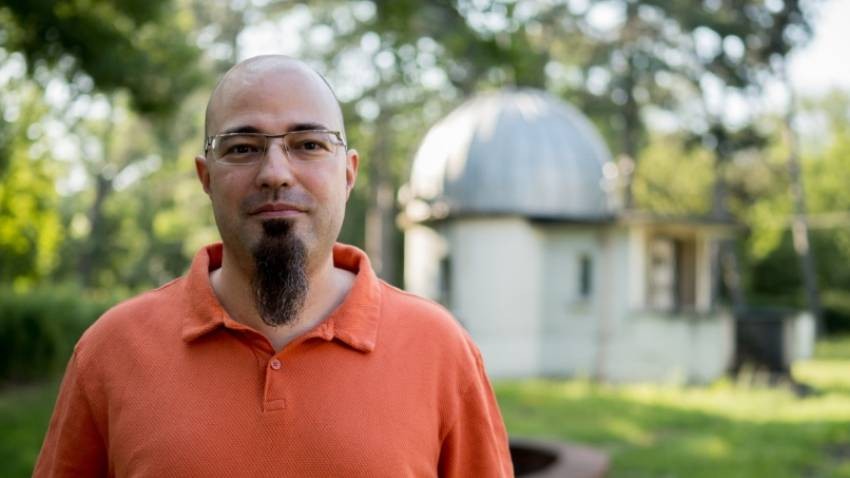Scientists from the Department of Astronomy at the Sofia University “St. Kliment Ohridski” have studied M2 (Messier 2) – one of the oldest globular clusters in our galaxy. Globular clusters are groups of stars bound together by mutual gravity and are believed to have a common origin. Using innovative approaches, the astrophysicists have obtained more precise data on M2's age, structure and dynamics. Their findings prompt a new rethinking of this type of cosmic phenomena. That is why they were recently published in one of the most prestigious scientific journals – Physica Scripta.

"What we found is that M2 is more flattened in the center, becoming rounder toward the periphery", said Dr. Georgi Petrov — one of the four scientists involved in the project:
"In fact, back in 1953, the great Russian astronomer Pavel Kholopov made the first calculations without the powerful computers we have today and noticed a change in ellipticity from the center toward the periphery. The astronomers after him, however, did not take this into account and began using an average value for the shape of the star cluster, since in most catalogs the measurements are taken only at a certain distance from the center", said Georgi Petrov.
Based on their in-depth research, the Bulgarian scientists were also able to determine the age of the star cluster — 13.2 billion years. According to the most recent data from 2010, M2 is no older than 12.5 billion years. Dr. Petrov explains:

"Why is this interesting? Because globular star clusters are the oldest formations in the galaxy and in the universe as a whole, and they provide clues about the lower limit of the universe’s age. There is also a need of a more advanced theory to explain why the star cluster is more flattened in the center and more rounded on the periphery, which is quite unusual! One would expect the opposite, since over the last half a billion years, it has approached the center of the galaxy three times, and due interactions with it, it should be more flattened at the periphery. A new theory needs to be developed to explain this change", Dr. Georgi Petrov went on to say.
And while the findings of the Bulgarian astronomers open up new horizons for knowledge, they are already preparing the next phase of their project by developing their own software to improve the accuracy of their measurements.
Published and translated by Kostadin AtanasovPhotos: astro.phys.uni-sofia.bg; NASA
Bringing youthful energy, colour and cheer to the Bulgarian National Radio studio, students from the Bulgarian Sunday School Dr Petar Beron arrived from Larnaca. The group from Cyprus — 16 pupils aged between 14 and 19 — is currently on a week-long..
At the outset of the war between Russia and Ukraine, the Bessarabian Bulgarians across all lands marked their national day with prayers for peace. Nearly four years on, burdened with even greater sorrow, they commemorate that special day scattered..
Switzerland is one of the smaller Central European countries on the Old Continent. It consists of twenty-six cantons with a population of about 9 million people, according to the latest Eurostat data from 2024. 41% of those residing in the country are..
On November 8 in Hall 11 of the National Palace of Culture, Bulgaria’s best masters and artisans will be awarded for the third time. The founder and..

+359 2 9336 661
